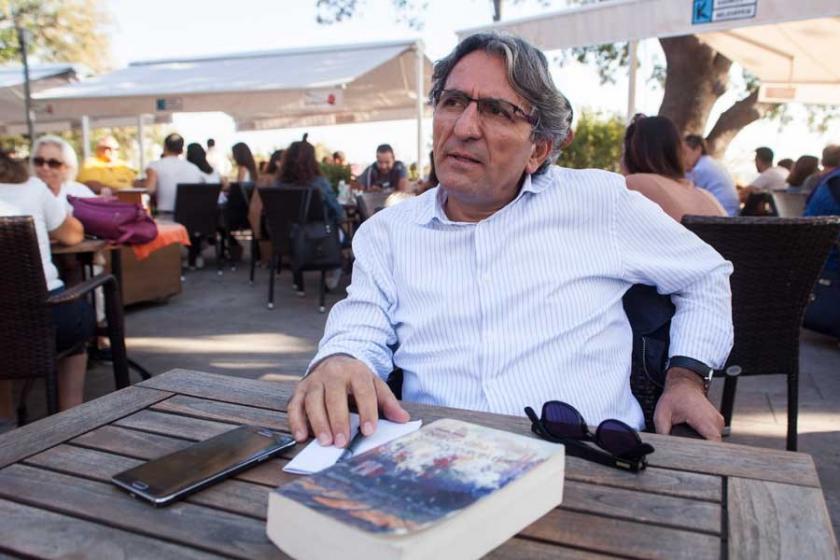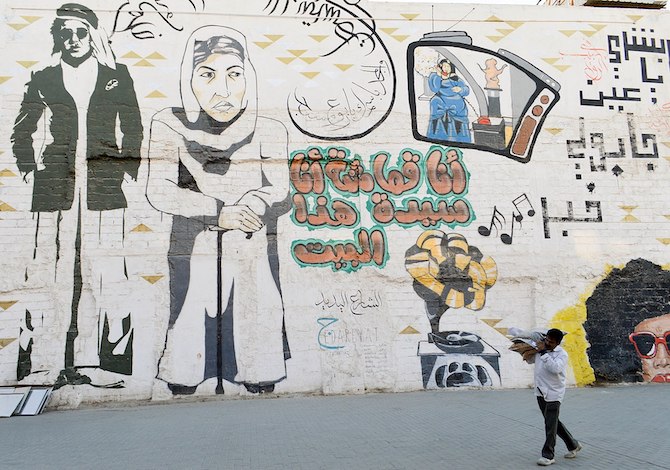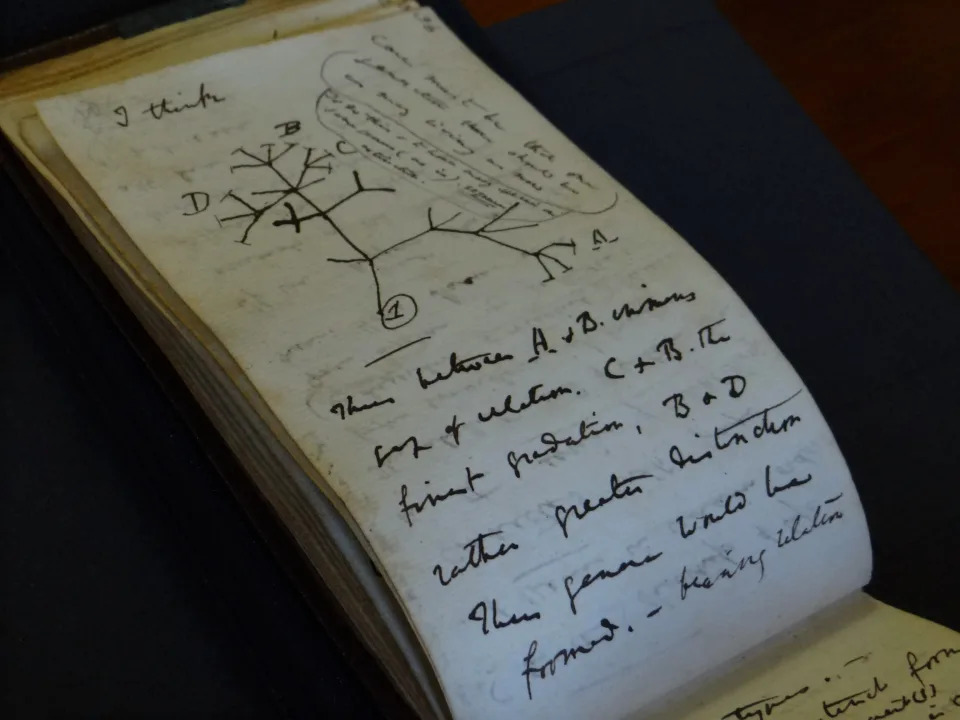COULD THE LEFT TAKE POWER IN COLOMBIA?
With the South American country closer than ever to electing a leftwing government, Nick MacWilliam explores what it could mean for peace and human rights.Gustavo Petro with family members in 2015.
Credit: Prensa de Bogotá, under a CC BY-SA 4.0 license
ANALYSIS
29 March 2022
As Colombia gears up for its presidential poll in May, the results of recent elections have shown that the Left has reorganized into a powerful electoral force banging at the door of national governance.
Whether that door can be pushed open or not will become clear when Colombians head to the polls on 29 May, with the opportunity to make history. The frontrunner for the top job is progressive senator and former mayor of Bogotá Gustavo Petro, who is running on a platform of public health, public education, environmental protection and the promotion of human rights and peace. These policies represent an antithesis to the current hard-right government of Iván Duque. If elected, Petro would become Colombia’s first leftist president.
Things are looking promising for Petro. His Historic Pact coalition held its election primaries on 13 March with almost six million votes cast – 80 per cent of them for Petro himself. Formed of leftwing and social democratic parties, the Historic Pact has unified diverse political strands and draws its base from sections of the electorate long marginalized from political influence, such as the working class, ethnic minorities, young people and rural communities.
If elected, Petro would become Colombia’s first leftist president
The primaries saw a huge vote for Francia Márquez, a renowned feminist and environmental activist. In what was her first electoral outing she came second to Petro and her vote far exceeded many long-established political figures running in other coalitions. Petro then picked her as his running mate, which means Márquez could well become the first black and female vice president of Colombia.
Márquez’s opposition to resource extraction and deforestation in her home region of Cauca elevated her to national consciousness and saw her awarded the prestigious Goldman Prize in 2018. Colombia is the world’s deadliest country for environmental activists – 65 were killed in 2020 alone – and Márquez has faced threats and attacks. Yet, she refused to back down. Her resolute defence of human rights and natural resources has earned her many admirers.
The Historic Pact also made major gains in congressional elections held the same day, winning the most votes at a national level for both the Senate and the House of Representatives. Although this was an unprecedented achievement for the Left, it did not translate into a left majority in either House.
THE CHALLENGE AHEAD
For any hope of a progressive agenda coming out of the presidential election, the Historic Pact will need to build alliances with traditional parties. This could prove tricky given establishment antipathy towards the Left, but it is not insurmountable; the Liberal Party exceeded expectations in its congressional vote and Petro has appealed to it in his bid for a broad alliance.
However, there will be a strong challenge from the Right. Petro’s principal rival is the former mayor of Medellín, Federico Gutiérrez, who received over two million votes in the primaries for the rightwing coalition, Team Colombia. ‘Fico’, as he is known, will enjoy the backing of business elites, much of the press and a large number of middle- and upper-class voters. President Duque’s party, the Democratic Centre, saw its electoral performance tank in the congressional elections, causing its candidate to withdraw and officially endorse Gutiérrez.
The new congressional term also saw the belated enactment of the Special Districts for Peace, 16 congressional seats created for representatives of regions badly impacted by conflict and state abandonment. Though created in the 2016 peace agreement, the seats’ activation had been impeded by Democratic Centre opposition. Unfortunately, a blighted electoral process left these municipalities open to coercion and some of those elected have links to traditional parties or paramilitary networks. Indeed, one of them, Jorge Rodrigo Tovar, is the son of notorious paramilitary commander ‘Jorge 40’ and will now represent the very victims of his father.
PEACE IN CRISIS
Duque’s election victory in 2018 was greeted with dismay on the Colombian Left. ‘The extreme Right is responsible for the very serious problems facing the country in terms of social inequality, of corruption, of human rights violations,’ warned Luis Pedraza, the head of Colombia’s largest trade union confederation, the CUT. As an acolyte of former president Álvaro Uribe, whose 2002-10 government was characterized by state atrocities, scandals and neoliberal consolidation, Duque had campaigned against the 2016 peace agreement between the then-Colombian government and the Revolutionary Armed Forces of Colombia (FARC) guerrillas. Many feared for the peace agreement’s future given the new government’s open antipathy towards it.
Those concerns were well-founded: Duque’s four-year presidency has been disastrous for peace and human rights. His government has presided over an insecurity crisis that has killed over 1,000 activists and 300 former FARC combatants since the peace agreement was signed. A combination of free-market policies and the Covid-19 pandemic has driven millions more Colombians into poverty, which today affects over 42 per cent of the population. In April and May 2021, mass protests over these issues encountered extreme state repression, with security forces killing, sexually assaulting and blinding scores of unarmed protesters – drawing condemnation from the United Nations, the European Union and Amnesty International. Yet neither Duque nor his ministers have faced any repercussions – nor, for that matter, have the police officers behind the abuses.
Perhaps the rightwing realize that the peace process could cause their political dominance to recede
In spite of these challenges, the peace process has endured and today more than 13,500 former FARC combatants have transitioned to civilian life, while the FARC-formed Comunes political party recently began its second guaranteed term in Congress, under the peace agreement’s chapter on political participation. The transitional justice system continues to investigate major human-rights violations committed during the conflict and will soon start issuing sentences. These investigations underpin one theory about the rightwing opposition towards the peace process: that powerful business and political figures want to ensure that their complicity with state-backed atrocities, such as the murder of over 5,000 members of the leftwing Patriotic Union party between 1984 and 2018, never comes to light.
Or perhaps the rightwing realize that the peace process could cause their political dominance to recede. While Colombia was at war, the Right routinely smeared progressive movements, including political parties, trade unions and human rights organizations, as guerrilla sympathisers, or even as guerrillas themselves. This legitimized horrific violence against anyone who advocated for a fairer society and virtually eliminated the electoral Left, as evidenced in the ‘political genocide’ of the Patriotic Union. But the mass movement for peace has countered rightwing militarism and generated democratic space for the articulation of values and ideas that resonate with large sectors of society.
While Colombia’s problems are too deeply rooted to overcome in a single term, the election of the first progressive government in national history would provide a foundation on which to begin the arduous process of genuine national transformation. For a great many people, especially in communities scarred by violence and scarcity, a new approach is sorely needed.
Nick MacWilliam is Trade Union and Programmes Officer at Justice For Colombia.


















